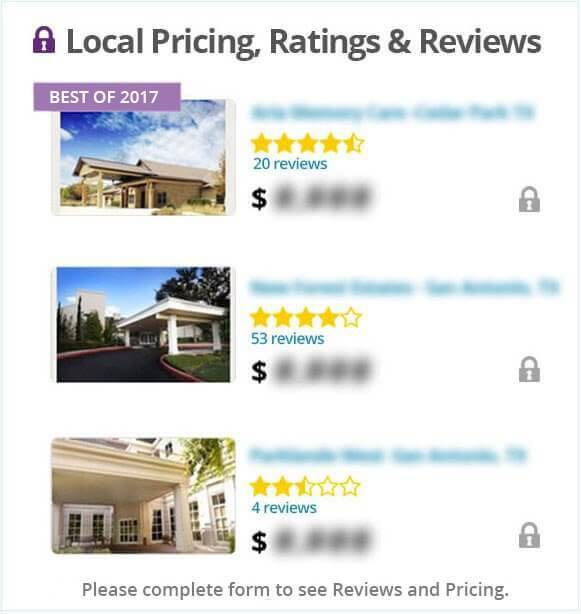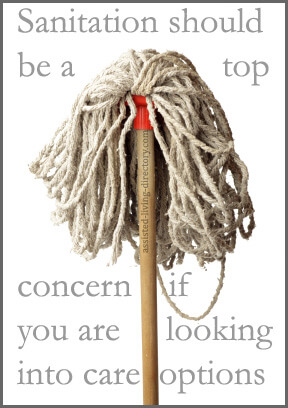Assisted Living Facilities: Sanitation and Food Safety

Summary: Most assisted living facilities adhere to strict sanitation standards. However, sanitation is not regulated in assisted living facilities as it is in nursing homes. Occasionally, facilities are cited for having unsafe or even dangerous sanitation conditions.
Sanitation is something that might not be at the top of your checklist when you are considering an assisted living facility for you, or perhaps a loved one.
Usually the items that receive the most attention Sanitation information on Assisted Living Directoryare amenities, level of care, and cost. I would venture to guess that sanitation and food safety are only an after thought for most people going through the process of choosing a facility. For those already living in a facility, sanitation is most likely not ever talked about unless there is an obvious problem.
Although is is not an epidemic, problems with sanitation and food safety do occur in the assisted living world, and when they do, they can be quite serious. We were reading a news story today about an assisted living facility in Oregon that was cited for having unsanitary kitchen conditions and multiple other code violations. There is suspicion that this facility and the owners are having financial difficulties.
One might assume that assisted living facilities are carefully regulated when it comes to sanitation and food safety, just as nursing homes are. However, this is not the case. Unlike nursing homes, there are no federal quality standards for assisted living facilities, only a state agency that performs health and safety inspections.
The dining model of many assisted living homes and facilities is often times much different than that of restaurants or nursing homes. Residents may have a choice of eating in common areas, or having their meal brought to their room or apartment, making the meal travel farther for delivery, adding to the inherent sanitation risks. More support personnel may be needed for the entire food service process in an assisted living facility than you might find in a normal dining room or situation. This also adds to the amount of possible contact between humans and the food served. Again, all of this happens in an environment of heightened vulnerability.
Residents of assisted living facilities are many times much more susceptible to bacteria, germs or illness due to their age, and compromised immune systems due to other illnesses or conditions that they may have.
Should we as family members and concerned citizens trust that assisted living facilities will be regulated by the appropriate state agencies frequently or thoroughly? Probably not, since often times these agencies or inspectors will go as far as announcing when they will be visiting, giving the facility a ‘heads up’ to clean up their act. This may not happen every time, but state agencies do not usually visit facilities frequently enough to really keep the standards in place. It is then up to each facility to monitor themselves, and provide a safe and sanitary environment. I don’t think it is unreasonable for a family member or a potential resident to ask to see the kitchen and dining areas unannounced. Perhaps more involvement from the family level will help keep facilities on their toes.
Asking about staffing and staff-training is also important. How are the staff in each facility trained? Does the facility have and employ a ‘Standard Operating Procedures” manual? Are there adequate facilities for staff to wash their hands, and are these facilities stocked with soap and towels? Being involved and aware of the operation and standards of “your” facility will go a long way in making sure that remains a safe and sanitary environment for you or your loved one.
Is it a stretch to suggest that the standards set for sanitation in any facility would likely be a mirror image for the standards set for the rest of the facility’s operations, including the care provided, the management, upkeep, and overall level of service?
Update: June 2013: We found this excellent video of a facility administrator talking about the steps she, and her facility have taken to ensure a clean, sanitary environment. She discusses the air exchange system, which ‘replaces’ the air in the facility every hour, ensuring that smells and odors are gone quickly if a ‘resident’ has an accident.
Additionally, and interestingly, her facility’s carpet is in ‘squares’ so if there is a mess or an accident on the carpet, they don’t just clean the area, they go the extra step to replace the carpet in that area!
800-291-3893Pricing & Availability
Get Pricing
800-291-3930Pricing & Availability
Get Pricing
Who to contact if you are concerned about the sanitation of an assisted living facility (generally): Human Services Licensing Department or your State Health Department
Resources:
– by the staff at Assisted Living Directory
800-308-7754Pricing & Availability
Get Pricing
Responses to this article:
Cecil Wrote:
If you have a shared bathroom at an assisted living facility and your ‘roomie’ is messy and the staff can’t keep it clean, what do you do?
4 April 2016 at 8.32 am
Clark Wrote
Is there a place that people can go to submit complaints about facility cleanliness or food issues? Is it the department of health, or something like a long-term care ombudsman?
7 November 2012 at 1.31 pm
Cecil Wrote:
If you have a shared bathroom at an assisted living facility and your ‘roomie’ is messy and the staff can’t keep it clean, what do you do?
4 April 2016 at 8.32 am
Cecil Wrote:
If you have a shared bathroom at an assisted living facility and your ‘roomie’ is messy and the staff can’t keep it clean, what do you do?
4 April 2016 at 8.32 am
Skip Wrote:
Definitely doesn’t help a facility’s rep to drive by and see their staff outside smoking in plain view.
20 June 2012 at 5.43 pm
Marcus Wrote:
One of the telltale ways to learn how clean a facility is or is not is to just smell the air. Is it stale, fresh, or does it smell like old towels. Seriously, when you visit a facility, take a deep whiff and that could tell you volumes.
16 November 2011 at 5.41 am
Heli Wrote:
This is a good, practical article, which addresses an often neglected issue. Food borne illness is common in Assisted Living Facilities. When taking a tour of one, it is also a good idea to take a careful look in the kitchen as well as the dining room. Heli heperrett @ aol.com
www.thesafefoodhandbook.blogspot.com
23 February 2011 at 6.43 am
Anonymous Wrote:
Page Place Assisted Living, , Longview, TX needs to be reported for having a nasty kitchen and refrigerator. Who would I report it to? It is outside the city limit of Longview and it is considered Harrison County.
16 December 2009 at 2.39 pm
Barbara Wrote:
someone is using their home im my neighbor, strictly zoned residential, to house 4 people. this person has moved her family out. How do I determine if this is legal?
1 November 2009 at 10.29 am
No Obligation
Assisted Living with Assisted Living Facilities: Sanitation and Food Safety



